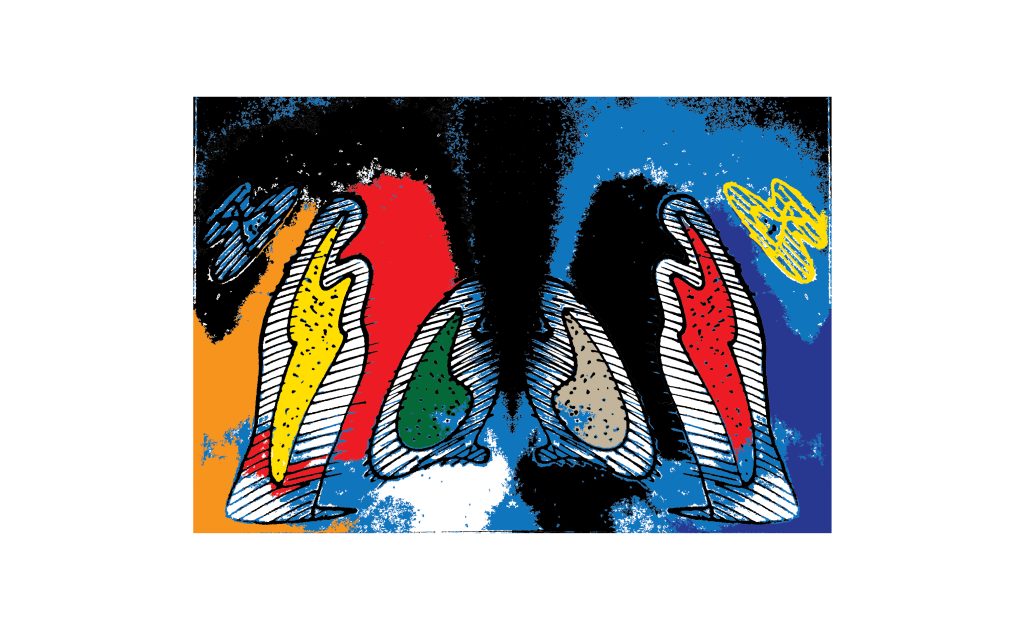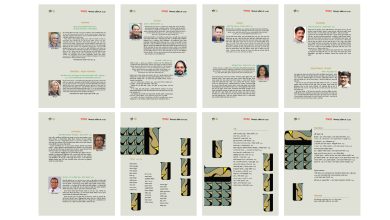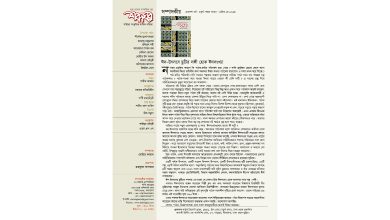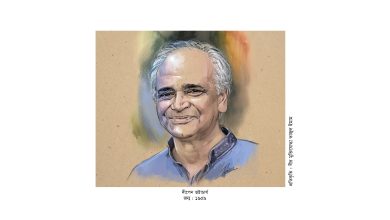Essay : Drafting the UN Genocide Convention in 1948: Marginalized Voice of a Muslim Woman from Bengal : Mofidul Hoque

The Holocaust and horrors of the Second World War, the suffering and misery of millions of people, the targeted killing of civilians – men, women and children – the extermination and destruction of large groups of people was a grave warning to the humanity whereby the international community took measures to confront such massive brutality. Along with other steps two seminal documents were adopted in December 1948 by the global community with far-reaching impact. One was the Universal Declaration of Human Rights and the other the Convention on Genocide. Raphael Lemkin, the Polish humanist lawyer coined the term ‘Genocide’ and dedicated his life to ensuring that genocide is made a punishable crime under international law and international community not only to define genocide but also enact legislation for the prevention and punishment of genocide. The path to the adoption of Genocide Convention was as a long and arduous one. Initially the draft was prepared by the Economic and Social Council, in its Ad Hoc Committee and then it moved to the Sixth Committee or the Legal Committee of the UN. After long deliberations they presented the final version to the General Assembly to be adopted on 9 December 1948.
This was not an easy journey and the deliberations in the Legal Committee had great significance for the study and understanding of genocide. The debate on the definition of genocide centered around the inclusion of political group among the four protected groups agreed upon, that is national, racial, ethnical and religious. Inclusion of cultural genocide became another point of contention. The establishment of the international criminal court was another delicate issue where representatives of the states could not come to a common understanding. Finally, after long debate and clash of ideas, compromises were made whereby the revised version of the Genocide Convention got approval of the General Assembly and became the source of law and appropriate action.
While analyzing the backdrop of the adoption of Genocide Convention the scholars had retrieved many documents and analyzed the debate in many different ways. But little attention has been paid to the role of newly independent nations in the genocide debate. The scholars have failed to take note of the important role the woman representative from Pakistan played in the Legal Committee. Leo Kuper’s book Genocide: Its Political Use in the Twentieth Century is an exceptional work. Bangladesh genocide has been highlighted in an interesting way in the cover page of the book and more so in its content. He threw light on the debate around the definition of the crime of genocide and the legal provision to punish the perpetrators. He mentioned the argument made by the Pakistani representative without identifying him or her and wrote:
“There was criticism of the conception of genocide as exclusively a crime of governments. The representative of Pakistan argued that such organizations as fascist or terrorist organizations might commit genocide, not connected in any way with the government in power, as had been the case of Germany under the Weimer Republic, where the government had been unable to take effective action. So too in India, terrorist organizations had been able to massacre hundreds of thousands of people with impunity, for the simple reason that the government was powerless to prevent and suppress these acts of terrorism.”1 It is obvious from the quote that the representative of Pakistan was well versed in recent history and put the argument in a forceful way. It is interesting to search for the identity of the Pakistani representative and what other intervention the person made. The representative was Shaista Suhrawardy Ekramullah, a learned woman from a distinguished family of Bengal, who became member of the Constituent Assembly of Pakistan as a representative of Eastern Bengal. She joined the delegation as member from East Bengal which became part of Pakistan at the end of the colonial rule and later in 1971 emerged as the independent state of Bangladesh.
Shaista Ekramullah most probably was the only woman representative in the Sixth Committee contributing in drafting the Genocide Convention. This fact has great significance as we are now more focused on elimination of gender bias in genocide studies. Genocide scholar Adam Jones in his book “The Scourge of Genocide”, raised the question of when will we hear more female voices? He mentioned Hannah Arendt as one of the foundational names followed by Samantha Power, Barbara Harff, Helen Fein, Joan Ringelheim and Elisa Von Joeden-Forgey. But Shaista Ekramullah was a pioneer and deserves a rightful place in history. Adam Jones wrote, “One hopes that a greater gender balance will also soon be evident in an institutional sense.
The ballot for the latest (2011) elections for the IAGS executive featured no women candidate above the (lowest) level of the Advisory Council”. Since then the scenario has changed so much that the leadership of the IAGS now has been taken up by the women scholars. This is the time when we need to take a closer look at the lone woman in the men’s club of legal minds and experts at the UN during critical juncture of history to adopt the Genocide Convention in 1948. Most importantly she was not just another member of the delegation, but an effective one.
Shaista Suhrawardy Ekramullah was born in an illustrious family of Bengal in 1917. Her father Sir Hasan Suhrawardy was a man of letters and served as Vice-Chancellor of the Calcutta University. Her paternal grandfather Maulana Ubaidullah al-Ubaidi Suhrawardy was a Sufi scholar per excellence who also took English education, was proficient in Persian, Arabic, Greek and Latin. He was the first principal of Dhaka Aliya Madrasha. Shaista’s cousin Huseyn Shaheed Suhrawardy was the Chief Minister of colonial Bengal in the last days of the Raj. Later on for more than a year H. S. Suhrawardy was the Prime Minister of Pakistan. Shaista Suhrawardy was married to Mohammad Ekramullah, an ICS officer who later became the Foreign Secretary of Pakistan. From 1936 to 1940, in the turbulent clays of Second World War she was in England with her husband. She studied at the University of London and was awarded a PhD for her dissertation on the development of Urdu novel and short stories. In 1947 when the state of Pakistan was born she moved with her husband to Karachi, the capital of Pakistan. She was elected a member of the newly formed Constituent Assembly from East Bengal. Although she was a member of the ruling Muslim League, she championed the cause of the Bengali people. She prepared herself to deliver the maiden speech at the Assembly but had to intervene earlier because of a motion raised by a member from East Bengal. He proposed that Constituent Assembly should sit not only in Karachi and also in Dhaka. In her autobiography Shaista wrote: “I supported the idea whole-heartedly, pointing out the great benefits that would come of it. The Prime Minister Liaquat Ali Khan got up to reply and looking at me said in mock horror: ‘Women never understand practical difficulties’, to which I retorted, ‘If we had considered the difficulties in our way we would never have supported the demand for Pakistan.”3
In the very first session of the Constituent Assembly held in Karachi on 24 February, 1948 Professor Raj Kumar Chakrabarty, member from East Bengal proposed that some of the sittings of the Assembly be held in Dhaka, the capital of Eastern Pakistan which consists of two-thirds of the people of Pakistan. Tamizuddin Khan of Muslim League opposed the amendment citing financial and practical difficulties. Begum Shaista Ekramullah intervened at this point and her deliberation showed a deep understanding of reality as well as the aspiration of the Bengali people of Eastern Pakistan. She dismissed the ‘Practical difficulties’ out rightly and said, ‘I am not suggesting any remote village in Eastern Pakistan but Dacca (Dhaka) which, I presume, has got sufficient arrangements to accommodate the House”. Moreover in a very logical and forceful way she pointed out the emerging conflict between the center in the West and aspirations of the Bengali population in the East and made a visionary submission. She said, “A feeling is growing among the Eastern Pakistanis that Eastern Pakistan is being neglected and treated merely as a ‘colony’ of West Pakistan. We must do everything possible to eradicate this feeling. This narrow provincialism must be stated. Justified or unjustified we must not give any province a chance of feeling that it is neglected. I have lived many years with the Western Pakistanis and I feel that they are grossly ignorant of the people of Eastern Pakistan. I, therefore, think that at least once a year a meeting should be held in Eastern Pakistan.”
The House rejected the motion but history has proved Shaista Ekramullah correct. Her observation about the colonial characteristic of Pakistan state gradually became a harsh reality and the struggle of the Bengali people for their right of self-determination culminated in the national liberation war in 1971.
Shaista Ekramullah was nominated by the Government of Pakistan to represent the country in the Third Session of the UN to be held in Paris in September 1948. Thus she started her sojourn with the UN Committees entrusted to draft the UDHR and Genocide Convention. Her practical experiences in this venture had been narrated in her autobiography. She got introduced to Raphael Lemkin which made a deep impact on her. She wrote: “Professor Lemkin had made it his life’s work to see that the horror was not repeated. Clause by clause in the Convention against Genocide, he tried to safeguard the rights of the individuals against brute forces. Though he was not a member of the Committee dealing with the drawing up of the Convention, he was the inspiration behind it. For me also this subject was a very emotive one. I had worked for a year- before coming to the UN Session – in the refugee camps and seen with my own eyes the devastation.”4
Shaista Suhrawardy Ekramullah had the personal experience of the tragic brutality that unfolded in her own land, the great Calcutta killing or 1946 riot followed by the partition violence in Punjab and Bengal. In December when the session was drawing to a close and she was entrusted by the secretary of the delegation, a seasoned diplomat Agha Shahi, to speak on the Convention at the time of its introduction to the General Assembly.
She was nervous to perform this important feat but Agha Shahi assured her not to bother about the speech. She recollected the conversation and wrote: “I have a complete speech written here; Agha Shahi said, pointing to some papers before him. All you have to do is read it, “Shaista Ekramullah was not the person to be subservient to such male chauvinist gesture of assistance. She replied, ‘But I don’t read speeches written by someone else. I write my own speeches”. That she did although she didn’t have much time in hand. She wrote in her autobiography:
“Professor Lemkin had been watching the proceedings from the side, and as I came down from the dais, he stepped forward and congratulated me. I felt I couldn’t have done so badly after all. When the Session was over and I met him again, he again thanked me for my work on the cause that was so dear to his heart. I told him it was dear to mine also as my people had been the victims to Genocide. We were both sad that the so-called great countries had not voted to declare Genocide a culpable crime.”5
Such was her description of the historic moment of adoption of the Genocide Convention. Her understanding of the Convention had been reflected in an article she contributed to Pakistan Horizon, published in December 1948. In that write-up she critically analysed the work of the two committees dealing with UDHR and Genocide Convention and explained her position on various contending issues. This article has insights and evaluations which are relevant for genocide studies today. We can cite examples of debate on cultural genocide and proposal to declare genocide as a criminal offence. She wrote: “There were prolonged and heated discussions on all such articles as gave room for legal quibbling; for instance, who should be held responsible when genocide was committed, the government or head of the state…. If punishment was to be meted out only to legally constituted governments, powerful organisations within the country which commit genocide could go unpunished. But recent events in Nazi Germany, as well as the activities of the RSS in India, have shown that long before capturing the machinery of the government, a powerful party can commit what is virtually genocide.”6
Shaista Ekramullah worked with few others to amend the original proposal describing cultural genocide giving due consideration to the apprehension of various national delegates. She wrote, “We had presented a very concise and precise amendment in which we had sought to make punishable only systematic, forcible and mass convention of people and destruction of objects of veneration and worship.” The amendment had made the proposal shorter and focused, it was done with an aim to project only the basic concept to the global community based on the understanding of genocide as the destruction of a nation or a group, not only physically but also culturally.
It is interesting to note that while explaining the concept of cultural genocide she used words like ‘we’ or ‘our’, as if she is owning it. But the amendment could never be tabled for consideration due to a procedural mistake. She explained that in detail and wrote: “The Iranian amendment suggested the deletion of the entire Article as it stood. It came up for voting first and after it had been passed, the President gave the ruling that subsequent amendments could not be discussed. Later on, during the discussions, a similar situation recurred. But in this instance, the ruling of the Under Secretary was that an amendment asking for deletion was not an amendment but a proposal, and as such should not be treated as the amendment farther from the text and should be discussed as a proposal. However, this did not help us, because by that time it was too late to try to have Article III reinstated.”
The draft convention approved by the Ad Hoc Committee suggested that persons charged with genocide should be tried either by a competent tribunal of the country or by an international tribunal. However after elaborate discussion it has to be dropped.
She was frustrated but duly noted, “Its deletion meant that the Convention became virtually useless, and all of us who were very keen that Convention on Genocide should be made really effective, were sorely disappointed. However, due mainly to the indefatigable efforts of Professor Lemkin, the principle of international jurisdiction were re-introduced in somewhat modified form [in Article VI].7
She was more frustrated with the deletion of cultural genocide at the penultimate stage that happened due to a misinterpretation of the approval process. She was very closely involved in drafting the relevant text on cultural genocide. She wrote; “It was deleted due to certain misconceptions. Firstly, it was thought by some nations that cultural genocide was not as heinous as physical genocide. These nations obviously had had no experience of genocide. Otherwise they could have known that in order to destroy a group it was not necessary to exterminate its members. By merely destroying their cultural characteristics, the group could be annihilated. Secondly, those who objected to cultural genocide being declared an offence did so on the ground that, although very reprehensible, it could not be considered as heinous as physical genocide and that the proper place for safeguards against it was the Human Rights Charter or the Charter of Minorities Thirdly, there were those who had minorities in their countries and were afraid that advantage would be taken of the suggested provision in the Convention to arrest the process of integration.”
Shaista Suhrawardy Ekramullah connected East Bengal with the Genocide Convention that became very relevant to Bangladesh, the nation which became the victim of one of the worst genocides after the Holocaust. She represented Pakistan in the UN Sessions on Genocide Convention and worked hand in hand with Raphael Lemkin.
Interestingly another historical contact of East Bengal with Raphael Lemkin was made in 1957 when Kamruddin Ahmed, a lawyer and nationalist politician from Dhaka, East Bengal joined the delegation of Pakistan to the United Nations. In New York he was introduced to Professor Lemkin by S. A. Bokhari, an old friend of Shaista Ekramullah.
That was a time when democratic experiment in Pakistan made a positive turn with Huseyn Shaheed Suhrawardy, cousin of Shaista Suhrawardy, became the Prime Minister of Pakistan. Raphael Lemkin, as always was very eager to get as many countries to ratify the Genocide Convention and persuaded Kamruddin Ahmed in this regard. On his return to home Kamruddin Ahmed received a letter from Raphael Lemkin, dated March 29, 1957, where Lamkin wrote:
“I wonder whether you had a chance to see the Prime Minister in the matter we have discussed. If for some reason you were unable to see him, I would be most grateful if you would agree to write to him about the same matter. I know how deeply you feel about distressed humanity, I know also that you are a man of action and you will not fail to translate a deep conviction into a legal act.”9
The effort did not go in vain. In a subsequent session of the Parliament in 1957. Pakistan ratified the Genocide Convention. Soon after, the democratic process in Pakistan came to a halt with the imposition of Martial Law, Suhrawardy was removed from power and a long era of military domination culminated in the genocidal brutality of Bengali people in 1971.
Shaista Ekramullah had not lost her faith on history even in the dark time of debacle and failures. With the adoption of the Convention on the Prevention and Punishment of the Crimes of Genocide her realization was that, at least the question had been brought to the forum of the world and we would go on trying.
In our continuing effort to confront genocide we remember Shaista Ekramullah as a pioneer woman in the arena of genocide studies. A Bengali Muslim woman from a far-away land has given the message that to learn the lessons from the past we have to listen to other voices too, specially the voices from the marginalized state and society. In this regard 75 years ago at an important juncture of history Shaista Ekramullah raised a distinct voice and we need to listen carefully to recognize her voice, give her a due place in history.
footnote
1. Leo Kuper-Genocide: Its Political Use in the Twentieth Century, Yale University Press, USA, 1982, P. 38
2. Adam Jones- The Scourge of Genocide, Routledge UK, 2013, Introduction
3. Shaista Suhrawardy Ekramullah. From Purdah to Parliament, Oxford University Press, Pakistan, 1998-P. 165-66
4. Anwar Dil and Afia Dil – Bengali Language Movement and Creation of Bangladesh, Adorn Books, Dhaka 2011, Page, 605-6.
5. Shaista Suhrawardy Ekramullah – From Purdat to Parliament, P. 160
6. Shaista S. Ekramullah-Pakistan Horizon, December 1948 <https://about.jostor.org/terms> last accessed 18 Nov, 2022.
7. op. cit.
8. op.cit
9. Kamruddin Ahmed, Banglar Ek Modhobitter Atmakahini (in Bengali), Nowroz Kitabistan, 79.
Mofidul Hoque : Researcher, Publisher and Essayist
Illustration : Rajat




